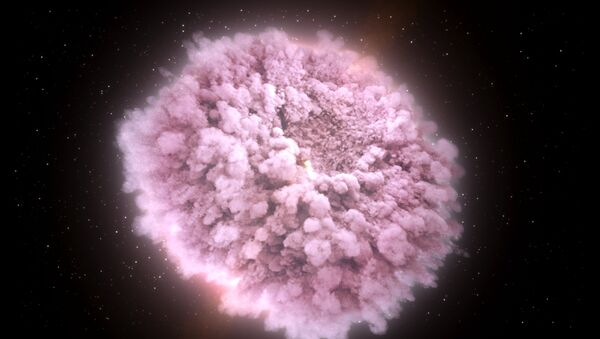The object, commonly referred to as GRB150101B, was reported as a gamma-ray burst, first spotted by NASA’s Neil Gehrels Swift Observatory three years ago. The observations that followed, at the hands of NASA’s Chanda X-ray, Hubble Telescope etc., suggest that the said object bears certain similarities with a neutron star merger, dubbed GW170817, which multiple light-gathering telescopes caught a glimpse of on 17 August 2017.
Interestingly, a fresh survey, published in the journal Nature Communications, has found cues that these two separate objects might in fact be directly related to each other.
“Our discovery tells us that events like GW170817 and GRB150101B could represent a whole new class of erupting objects that turn on and off–and might actually be relatively common,” Eleonora Troja, the study’s lead author, noted in a statement.
Co-author Geoffrey Ryan, of the University of Maryland at College Park (UCMP), proceeded to say that the researchers met up with “cosmic lookalikes”:
"They look the same, act the same and come from similar neighborhoods, so the simplest explanation is that they are from the same family of objects."
In the case of GRB 150101B, which was discovered and studies back in 2015, no gravitational waves were observed in light of the absence of the respective observatory. According to the study’s authors, even if there had been one operating, it perhaps couldn’t have picked up waves from such a distant source.
Here's an amazing visualization of the #NeutronStar merger which produced #GW170817, #GRB178017A, and the kilonova #SSS17a, created by @NASAGoddard: https://t.co/62TEmQjmTx pic.twitter.com/fVx7RnUJ6K
— LIGO (@LIGO) 16 октября 2018 г.
Powerful Cosmic Flash Is Likely Another Neutron-Star Merger https://t.co/aPlRmzgXMj pic.twitter.com/mVAehzVwjt
— SPACE.com (@SPACEdotcom) 17 октября 2018 г.
With measurements of gravitational waves of the 2015 objects, researchers cannot be certain about the mass of the sources, which means these may include a neutron star and a black hole. Hence the importance of finding “more cases like GW170817” that combine both gravitational and electromagnetic data, the scientists underscored.
READ MORE: WATCH Virgin Galactic's New Rocket-Powered SpacePlane Make First Test Flight





